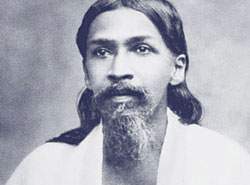Bases of Yoga

Bases of Yoga
Bases of Yoga by Sri Aurobindo is a collection of 156 extracts from his letters to disciples, Sri Aurobindo explains the central principles and practices of his Integral Yoga.
There can be no firm foundation in sadhana without equality, samata. Whatever the unpleasantness of circumstances, however disagreeable the conduct of others, you must learn to receive them with a perfect calm and without any disturbing reaction. These things are the test of equality. It is easy to be calm and equal when things go well and people and circumstances are pleasant; it is when they are the opposite that the completeness of the calm, peace, equality can be tested, reinforced, made perfect.” – Sri Aurobindo
Book Details
Author: Sri Aurobindo
Print Length: 87 pages
Publisher: Sri Aurobindo Ashram
Contributor: Krishna
Book format: PDF, ePub, Kindle (mobi)
Language: English
Book Download
Contents
- Calm — Peace — Equality
- Faith — Aspiration — Surrender
- In Difficulty
- Desire — Food — Sex
- Physical Consciousness — Subconscient — Sleep And Dreem — Illness
Book Sample
Bases of Yoga
Calm — Peace — Equality
It is not possible to make a foundation in yoga if the mind is restless. The first thing needed is quiet in the mind. Also to merge the personal consciousness is not the first aim of the yoga: the first aim is to open it to a higher spiritual consciousness and for this also a quiet mind is the first need.
*
The first thing to do in the sadhana is to get a settled peace and silence in the mind. Otherwise you may have experiences, but nothing will be permanent. It is in the silent mind that the true consciousness can be built.
A quiet mind does not mean that there will be no thoughts or mental movements at all, but that these will be on the surface and you will feel your true being within separate from them, observing but not carried away, able to watch and judge them and reject all that has to be rejected and to accept and keep to all that is true consciousness and true experience.
Passivity of the mind is good, but take care to be passive only to the Truth and to the touch of the Divine Shakti. If you are passive to the suggestions and influences of the lower nature, you will not be able to progress or else you will expose yourself to adverse forces which may take you far away from the true path of yoga.
Aspire to the Mother for this settled quietness and calm of the mind and this constant sense of the inner being in you standing back from the external nature and turned to the Light and Truth.
The forces that stand in the way of sadhana are the forces of the lower mental, vital and physical nature. Behind them are adverse powers of the mental, vital and subtle physical worlds. These can be dealt with only after the mind and heart have become one-pointed and concentrated in the single aspiration to the Divine.
*
Silence is always good; but I do not mean by quietness of mind entire silence. I mean a mind free from disturbance and trouble, steady, light and glad so as to open to the Force that will change the nature. The important thing is to get rid of the habit of the invasion of troubling thoughts, wrong feelings, confusion of ideas, unhappy movements. These disturb the nature and cloud it and make it difficult for the Force to work; when the mind is quiet and at peace, the Force can work more easily. It should be possible to see things that have to be changed in you without being upset or depressed; the change is the more easily done.
*
The difference between a vacant mind and a calm mind is this: that when the mind is vacant, there is no thought, no conception, no mental action of any kind, except an essential perception of things without the formed idea; but in the calm mind, it is the substance of the mental being that is still, so still that nothing disturbs it. If thoughts or activities come, they do not rise at all out of the mind, but they come from outside and cross the mind as a flight of birds crosses the sky in a windless air. It passes, disturbs nothing, leaving no trace. Even if a thousand images or the most violent events pass across it, the calm stillness remains as if the very texture of the mind were a substance of eternal and indestructible peace. A mind that has achieved this calmness can begin to act, even intensely and powerfully, but it will keep its fundamental stillness — originating nothing from itself but receiving from Above and giving it a mental form without adding anything of its own, calmly, dispassionately, though with the joy of the Truth and the happy power and light of its passage.
*
It is not an undesirable thing for the mind to fall silent, to be free from thoughts and still — for it is oftenest when the mind falls silent that there is the full descent of a wide peace from above and in that wide tranquillity the realisation of the silent Self above the mind spread out in its vastness everywhere. Only, when there is the peace and the mental silence, the vital mind tries to rush in and occupy the place or else the mechanical mind tries to raise up for the same purpose its round of trivial habitual thoughts. What the sadhak has to do is to be careful to reject and hush these outsiders, so that during the meditation at least the peace and quietude of the mind and vital may be complete. This can be done best if you keep a strong and silent will. That will is the will of the Purusha behind the mind; when the mind is at peace, when it is silent one can become aware of the Purusha, silent also, separate from the action of the nature.
To be calm, steady, fixed in the spirit, dhīra, sthira, this quietude of the mind, this separation of the inner Purusha from the outer Prakriti is very helpful, almost indispensable. So long as the being is subject to the whirl of thoughts or the turmoil of the vital movements, one cannot be thus calm and fixed in the spirit. To detach oneself, to stand back from them, to feel them separate from oneself is indispensable.
For the discovery of the true individuality and building up of it in the nature, two things are necessary, first, to be conscious of one’s psychic being behind the heart and, next, this separation of the Purusha from the Prakriti. For the true individual is behind veiled by the activities of the outer nature.



